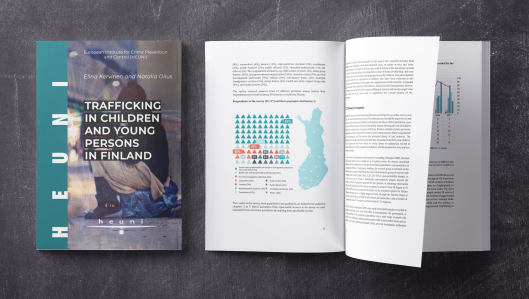Studies reveal: larger variation in the forms of child trafficking detected in Sweden than in Finland

Trafficking in children and young people exists even in the Nordic welfare states, according to a Swedish study published in 2018 and a Finnish study published in 2019.
Trafficking in children and young people exists even in the Nordic welfare states, according to a Swedish study published in 2018 and a Finnish study published in 2019. In Sweden for example, children of traveller population have been forced to beg on the streets. This phenomenon has not been identified in Finland.
Similarly, in Sweden authorities have identified more underage boys who have arrived from North Africa without their parents and who are being exploited, than authorities in Finland. The exploitation of children and young people who spend their time out on the streets was also not as widespread in Finland as in Sweden.
“Both young people belonging to the majority population and young people with a foreign background may be exploited in criminal activities in Finland. For example, young people who have run away from their foster homes, who are addicted to substances or who have committed petty offences, are at risk," says Natalia Ollus, Director of HEUNI.
The studies reveal that children and young people have been subjected to sexual exploitation, exploitation in criminal activities, forced marriage and labour exploitation in both countries. Young Finnish and Swedish persons with immigrant backgrounds have been taken away from the Nordic countries to their parents’ home countries, where they have been subjected to forced marriage.
The two studies focused on trafficking in children and young people under the age of 21. The Finnish study examined all forms of human trafficking, whereas the Swedish study looked at certain risk groups, such as unaccompanied minors, children who are out on the streets and children who are in the company of exploited adults, who experience different forms of trafficking.
Lack of public resources can increase the risk of child trafficking
Both studies recognise several factors that increase the risk of becoming exploited. The lack of safety nets, being homeless as a child or at a young age, being undocumented, previous experiences of violence and abuse, rootlessness, and addiction to drugs, for example, may lead to social marginalisation and exclusion.
In the worst case, children and young people may disappear. For example in Sweden, unaccompanied children have disappeared from their foster homes when authorities have not reacted to their situation quickly enough.
“If the authorities act fast enough within their mandate and have enough knowledge of human trafficking, disappearances can be prevented. As many of these children move between different countries, increased international cooperation is also required to combat the phenomenon," says Maria von Bredow, expert in children’s rights and author of the Swedish report.
According to the studies, one important way to prevent trafficking in children and young people in both countries is by increasing cooperation between different authorities and by investing in preventive activities so that human trafficking can be prevented before it happens. The problems related to the prevention of human trafficking are more or less connected with an insufficient understanding of the phenomenon, too few staff responsible for child protection, the underuse of protection measures as well as slow processes and inadequate resources in the public sector.
The English version of the Finnish study is published on the EU Anti-trafficking Day. 18 October 2019. The Swedish study will be published in English later this year.
Publication: Trafficking in children and young persons in Finland. Elina Kervinen and Natalia Ollus. HEUNI Publication Series No. 89b. Helsinki: HEUNI. 2019.
Available in English at:https://www.heuni.fi/en/index/publications/heunireports/reportseries89btraffickinginandyoungpersonsinfinland.html.
Available in Finnish at: https://www.heuni.fi/en/index/publications/heunireports/HEUNI_report_89_Lapsiin_ja_nuoriin_kohdistuva_ihmiskauppa_Suomessa.html
The report on trafficking in children and young persons in Finland was prepared as part of the IHME project, coordinated by the Finnish assistance system for victims of human trafficking in 2017–2019. The IHME project has received funding from the European Union’s Internal Security Fund (ISF-P).
Publication: De kan alltid hitta mig. Studie om människohandel och utsatta barngruppers livsvillkor. Rapport 2018:3. Stockholm: Länsstyrelsen i Stockholm. 2018.
Publication in English: They will always find me. A study of trafficking and the living conditions of vulnerable children. Report 2019:18. County Administrative Board of Stockholm. 2019.
Available at: http://www.lansstyrelsen.se/stockholm.
Media inquiries:
Natalia Ollus, Director, European Institute for Crime Prevention and Control, affiliated with the United Nations (HEUNI), tel. +358 50 513 5987, email: natalia.ollus@om.fi
Maria von Bredow, Expert in Children’s Rights, tel. +46 70 2579533, email: mvonbredow@gmail.com
Veikko Mäkelä, Senior Adviser, assistance system for victims of human trafficking, tel. +358 295 430 431, email: veikko.makela@migri.fi
Project page Trafficking of children and young people in Finland